Rhizoctonia Management On Kikuyu, Is It Large Patch?
Over the last few years a patch disease has developed on Kikuyu turf. Disease development tended to occur between autumn and spring. Read on to learn more.
Over the last few years, a patch disease has developed on Kikuyu turf. Disease development tended to occur between autumn and spring. Symptoms were very large patches of affected turf. Examination of samples found the roots to be severely infected with Rhizoctonia Solani. This pathogen is commonly referred to as Brown Patch and is known to cause disease on a range of turfgrass species.
In the USA and parts of Asia a specific form of Rhizoctonia Solani, also known as AG 2-2 LP causes a disease called Large Patch in a range of warm season turfgrasses including Couchgrass, Zoysia and Kikuyu. It attacks slowly growing, warm season turfgrass in cool, wet weather, and is most common on turfgrass that is semi-dormant or turfgrass that is going into or emerging from dormancy. In temperate climates the disease is most active in the autumn and spring, whereas in tropical climates the disease can be continuously active autumn through spring. Damage can persist through cool, wet conditions and often lasts until warmer spring or summer conditions allow for recovery and active regrowth of warm season turfgrass.
R. solani AG 2-2 LP is active at 10-30℃ with optimal infection occurring at 21-27℃. Large patch symptoms vary with patches ranging in diameter from 30cm to over 6m. Patch interior becomes sunken, and injured turf appears thin with a tan, yellow or orange colour. A useful diagnostic feature in the field is a brilliant "orange firing" of the expanding outer ring, which indicates active infection. Damage by Large Patch can be long-lasting, because infection occurs when warm-season turf growth is slow. In summer, turf recovers because the disease is not active at warm temperatures (> 30℃).
Cultural practices are the first step in reducing Large Patch.
- Improve drainage whenever possible, as saturated soil conditions exacerbate Large Patch.
- Regular aeration in summer will reduce compaction and risk of having water-logged soils.
- Minimize late summer/autumn nitrogen applications.
- Preventive fungicides can provide good to excellent control of large patch when timed correctly; the first autumn fungicide application is most important.
- Time the first fall application when the average thatch temperature is 21℃, or when the average soil temperature at a 5cm depth is 22-24℃
- A second autumn application is recommended to extend protection through cool, wet weather.
- Time spring fungicide applications when turf green-up reaches 50%
- Early timing just after initial turf green-up is better than later timing.
- Apply at 800 L/Ha to aid penetration to crowns and stolons, at lower spray volumes a light watering-in (approximately 6mm) is necessary.
Dedicate Turf & Ornamental Fungicide Trial
The Rhizoctonia affecting Kikuyu has not been diagnosed as the form which causes Large Patch (this involved more detailed DNA testing which is still being conducted). Because of the similarity in symptoms to Large Patch a trial was set up in 2017 to see if preventative fungicide applications could control the disease. The plan was to make two monthly applications of fungicide in autumn when soil temperatures had declined into the 22-24℃ range.
On 22nd April 2017 an application was made at 2 litres per hectare of Dedicate® and watered into the root zone. This application was made to half of a Kikuyu sports field, the other half was not treated.
Before Treatment
| Before Treatment | ||
|---|---|---|
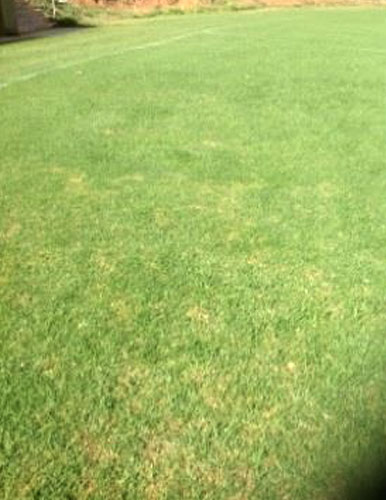 |
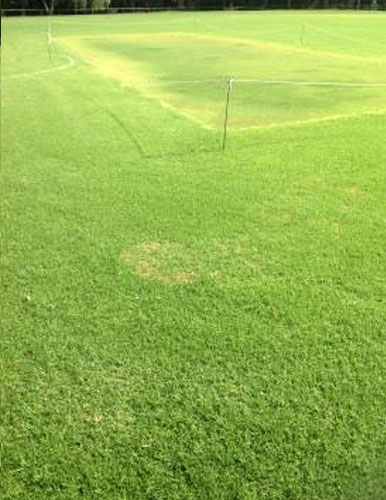 |
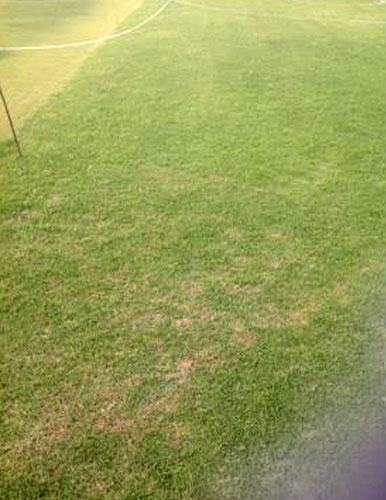 |
Early signs of disease, probably application should have been made a few weeks earlier.
May 2017
| Untreated | Treated | ||
|---|---|---|---|
 |
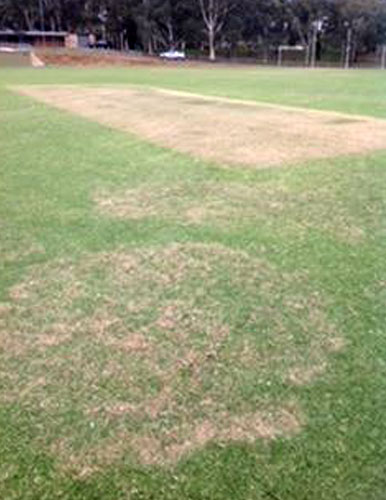 |
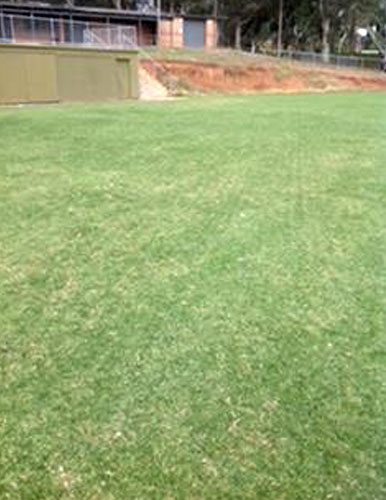 |
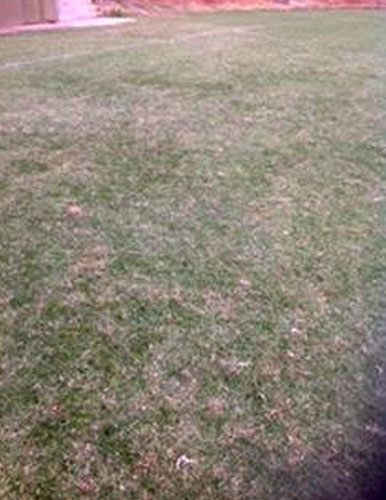 |
In May, before a second application of Dedicatethe untreated area was showing increased disease development. Area treated in April with Dedicate was free of disease and showing good turf heath. A second Dedicateapplication was made to this area after these photos were taken.
September 2017
| Untreated | Treated | |
|---|---|---|
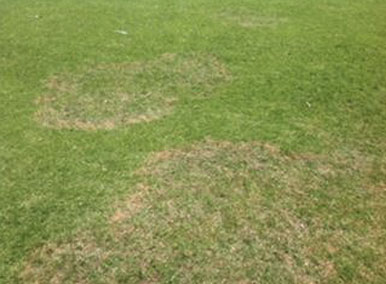 |
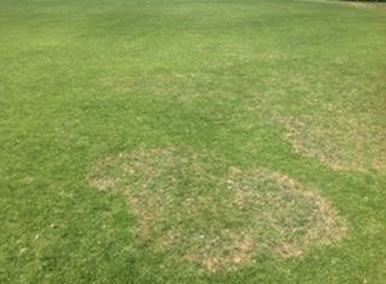 |
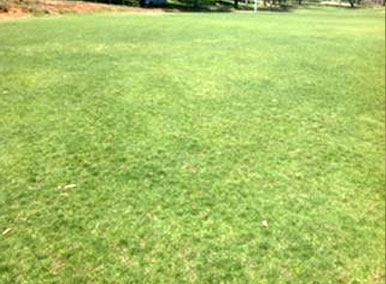 |
Five months after the trial started the disease continued to infect the turf in the untreated area and affect turf quality. The treated area remained free of disease and showed much better turf quality.
Summary
Two preventative autumn applications of Dedicate at 2 litres per hectare provided control of the Rhizoctonia disease affecting Kikuyu over the winter months. Soil temperatures should be monitored to get the correct timing for the applications, but it seems the March-May period is when these applications should be made. Irrigation after application is necessary to move the fungicide into the root zone.
To find out more information about our products and services, reach out to our team.
Always read the label before use.
Back to Other Diseases